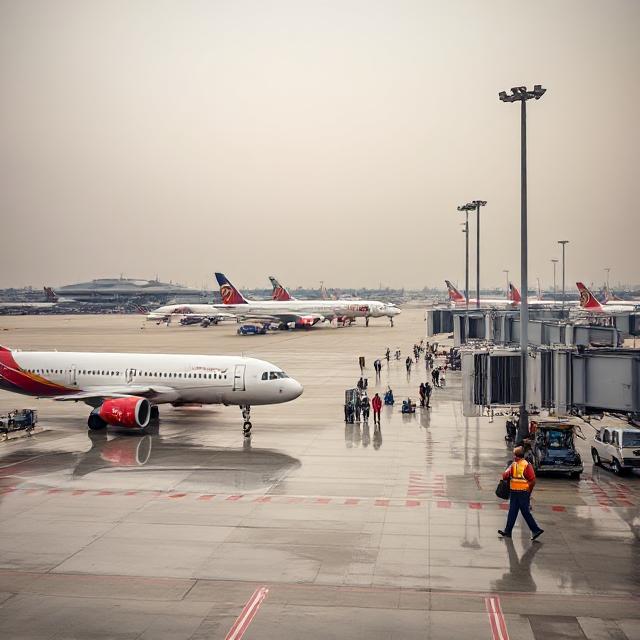The Airport Revolution in India: Building 88 Airports in 10 Years
India’s aviation sector has undergone a dramatic transformation over the last decade, marked by the construction of 88 new airports—an average of one airport every 40 days. This airport revolution has redefined the country’s connectivity, making air travel more accessible, affordable, and available than ever before. Under the leadership of Prime Minister Narendra Modi, the government’s strategic focus on infrastructure, regional development, and inclusive growth has propelled India into a new era of aviation.
Table of Contents
- Introduction: The Scale of India’s Airport Revolution
- Key Drivers Behind the Airport Boom
- The Role of the UDAN Scheme and Regional Connectivity
- Greenfield Airports: Building from the Ground Up
- Impact on Tier 2 and Tier 3 Cities
- Socio-Economic Benefits: Tourism, Trade, and Beyond
- Modernization and Upgradation of Existing Airports
- Safety, Sustainability, and Future Challenges
- The Road Ahead: Vision for Indian Aviation
- Conclusion
1. Introduction: The Scale of India’s Airport Revolution
In just ten years, India has witnessed the addition of 88 new airports, a feat that translates to the opening of one airport every 40 days. This rapid expansion is unparalleled in the nation’s history and places India among the fastest-growing aviation markets globally.
“Flying in India today is more accessible, more available and more affordable,” said Civil Aviation Minister Ram Mohan Naidu at the 2025 Northern Region Ministers’ Conference on Civil Aviation.
The numbers highlight not just the scale but the ambition behind the government’s approach: connecting the unconnected, unlocking the potential of smaller cities, and making air travel a viable option for millions.
2. Key Drivers Behind the Airport Boom
Several factors have converged to fuel this airport revolution:
- Political Will and Vision: The Modi government prioritized infrastructure as a key driver of economic growth, with aviation playing a central role.
- Regional Development Goals: Recognizing the need to bridge the urban-rural divide, the government focused on enhancing connectivity in Tier 2 and Tier 3 cities.
- Economic Liberalization: Policy reforms and private sector participation have injected capital and efficiency into the sector.
- Growing Middle Class: Rising incomes and aspirations have increased demand for affordable air travel.
The result is a more connected, competitive, and collaborative aviation ecosystem.
3. The Role of the UDAN Scheme and Regional Connectivity
A cornerstone of the airport revolution has been the UDAN (Ude Desh ka Aam Nagrik) scheme, launched to make air travel affordable and widespread by connecting underserved and unserved airports.
Key Features of UDAN:
- Subsidized Airfares: Making flying accessible to the common citizen.
- Viability Gap Funding: Encouraging airlines to operate on less profitable regional routes.
- Focus on Smaller Cities: Prioritizing connectivity for Tier 2 and Tier 3 cities, many of which had limited or no air access before.
The government set an ambitious target to develop 100 airports by 2024 under the UDAN scheme, with many already operationalized.
4. Greenfield Airports: Building from the Ground Up
A significant portion of the new airports are Greenfield projects—built from scratch on undeveloped land, often in regions previously lacking aviation infrastructure.
Notable Greenfield Airports (Operationalized Since 2014):
| Airport Name | City/State | Operational Since |
|---|---|---|
| Manohar International Airport | Mopa, Goa | Jan 2023 |
| Shirdi International Airport | Shirdi, Maharashtra | Oct 2017 |
| Sindhudurg Airport | Maharashtra | Oct 2021 |
| Kalaburagi Airport | Karnataka | Nov 2019 |
| Shivamogga Airport | Karnataka | Feb 2023 |
| Kushinagar Airport | Uttar Pradesh | Oct 2021 |
| Orvakal (Kurnool) Airport | Andhra Pradesh | Mar 2021 |
| Kazi Nazrul Islam Airport | Durgapur, WB | May 2015 |
| Pakyong Airport | Sikkim | Oct 2018 |
| Kannur International Airport | Kerala | Dec 2018 |
| Donyi Polo Airport | Itanagar, Arunachal | Nov 2022 |
“In 2014, there were 74 operational airports in the country which have now increased to 148 airports,” according to the Ministry of Civil Aviation.
Upcoming Greenfield airports include Navi Mumbai, Vijayapura, Hassan, Noida (Jewar), Dholera, and Hirasar, set to be operational within the next three years.
5. Impact on Tier 2 and Tier 3 Cities
The airport revolution has unlocked the vast potential of Tier 2 and Tier 3 cities, which now enjoy direct air connectivity to major metros and other regions.
Benefits for Smaller Cities:
- Economic Upliftment: Improved connectivity attracts investment, boosts local businesses, and creates jobs.
- Tourism Growth: Easier access opens up new tourist destinations, especially in states like Uttarakhand, Sikkim, and Arunachal Pradesh.
- Social Integration: Enhanced mobility bridges cultural and economic divides.
Uttarakhand Chief Minister Pushkar Singh Dhami highlighted aviation’s pivotal role in regional connectivity, tourism, and socio-economic development, especially in challenging terrains.
6. Socio-Economic Benefits: Tourism, Trade, and Beyond
The transformation of India’s aviation infrastructure has far-reaching socio-economic implications:
- Tourism: New airports have made remote destinations accessible, driving a surge in both domestic and international tourism.
- Trade and Logistics: Improved air cargo facilities expedite the movement of goods, supporting industries and agriculture.
- Education and Healthcare: Faster travel options for students, professionals, and patients needing specialized care in other cities.
“The phenomenal growth in the aviation sector has played a crucial role in enabling tourism and supporting socio-economic development,” noted Uttarakhand’s Chief Minister.
7. Modernization and Upgradation of Existing Airports
While new airports grab headlines, the modernization and upgradation of existing airports is equally significant.
Major Modernization Projects:
- Delhi, Bengaluru, Hyderabad, Lucknow, Guwahati, Ahmedabad, Mangaluru: These airports have seen substantial investments in new terminals, expanded runways, and enhanced passenger amenities.
- Capital Outlay: By 2025, the targeted capital outlay in the airport sector is approximately ₹98,000 crore, with over ₹25,000 crore invested by the Airports Authority of India (AAI) and the rest by private operators.
Modernization ensures that India’s busiest airports can handle growing passenger volumes and provide world-class services.
8. Safety, Sustainability, and Future Challenges
Safety remains a top priority, especially in regions with difficult terrain, such as the Himalayan states. The government and state authorities are committed to ensuring the highest standards in aviation operations, including helicopter services for remote areas.
Sustainability Initiatives:
- Green Airports: Many new projects incorporate eco-friendly designs, solar power, and water conservation measures.
- Noise and Emission Controls: Modern airports adopt best practices to minimize environmental impact.
Challenges Ahead:
- Land Acquisition: Delays and disputes can slow down new projects.
- Infrastructure Bottlenecks: Urban congestion and limited ground connectivity can hamper airport accessibility.
- Skilled Workforce: The rapid expansion demands more trained pilots, engineers, and ground staff.
9. The Road Ahead: Vision for Indian Aviation
India’s civil aviation ministry has outlined a vision for inclusive, sustainable, and globally competitive growth:
- Expanding Heliport Infrastructure: To connect even the most inaccessible regions.
- Strengthening Flying Training Organizations and MRO Hubs: To build domestic capabilities and reduce dependence on foreign facilities.
- Collaborative Approach: Synergies between central and state governments, private sector, and industry stakeholders are key to sustaining momentum.
The government’s commitment to collaborative, state-specific strategies ensures that the benefits of the airport revolution are widely shared.
10. Conclusion
The airport revolution in India—building 88 airports in just 10 years—has fundamentally reshaped the nation’s connectivity, economy, and social fabric. With a focus on regional development, affordability, and modernization, India has set a benchmark for emerging economies worldwide.
As the country continues to invest in new airports, upgrade existing infrastructure, and foster innovation, the future of Indian aviation looks brighter than ever. The journey from 74 to 148 operational airports is not just about numbers; it is a testament to India’s ambition, resilience, and vision for inclusive growth.












